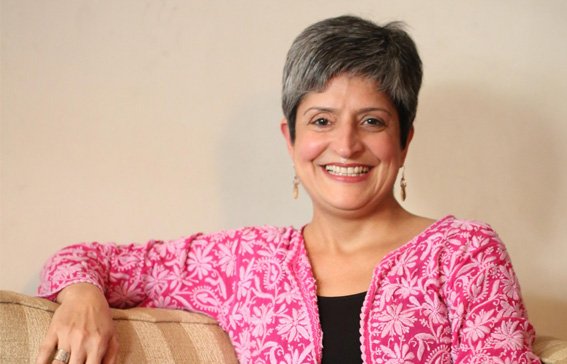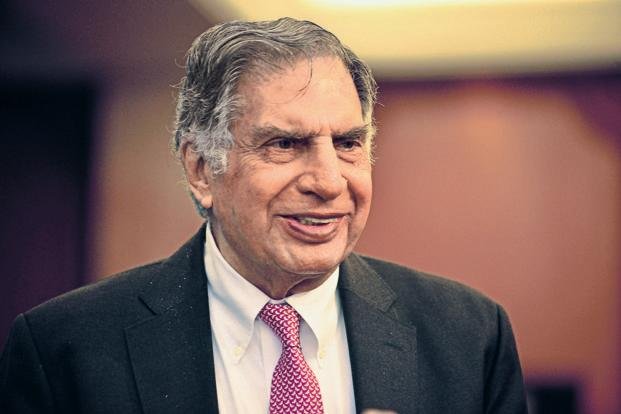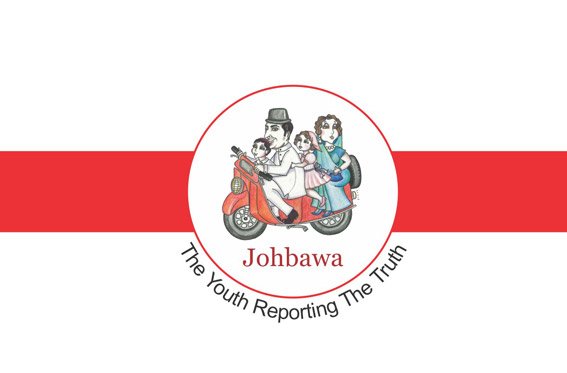How Dilshad Master Applied Learnings From Launching A Television Channel To The Travel Business
 In 2014, just weeks after a major surgery for a cancer diagnosis that two-years earlier had thrown Dilshad Master’s life into some sort of chaos, she found herself leading a trip to the Everest Base Camp. It was but a step in a journey that saw her go from launching television channels in India to becoming a startup entrepreneur and finally a full-fledged explorer. Well-known on the Indian speaker circuit for her sane advice, Master spoke about her journey – and what she’s learned along the way.
In 2014, just weeks after a major surgery for a cancer diagnosis that two-years earlier had thrown Dilshad Master’s life into some sort of chaos, she found herself leading a trip to the Everest Base Camp. It was but a step in a journey that saw her go from launching television channels in India to becoming a startup entrepreneur and finally a full-fledged explorer. Well-known on the Indian speaker circuit for her sane advice, Master spoke about her journey – and what she’s learned along the way.
After over 20 years in a career that saw her launching and managing eight television channels of various genres – Master was instrumental in National Geographic’s India foray, and was also formerly COO of UTV (since acquired by Walt Disney Company India) – she decided it was time to move on.
Initially working with television channels in the digital marketing space, she worked with a couple of friends on the creation of a web-marketplace for travellers with off-beat travel experiences, called the FarInto.
Having beat cancer, and made the Everest Base Camp trek at 45, Master today works alongside her husband as the Director of Operations at family-operated Mercury Himalayan Explorations, who have hosted several well-known documentary makers and expeditions within the lesser-traveled parts of India.
What do you feel you learned from your experience working in the Indian media and entertainment industry?
Dilshad Master: Media was still an unexplored field at that time – we’re talking 1988, when we were still a one-television-channel country. I think the idea was just to leave home and live on my own. So I applied for the Social Communications Media course at Sophia Polytechnic in Mumbai. I was told it was tough to get into that course and the drop rate was almost 20%. I love challenges! I got in and I completed the course, and so began my journey in the crazy world of entertainment.
I’ve learnt four crucial things from the media business, things that I have carried with me into the travel world:
1. There’s no room for mistakes. A two-second black on air means a sloppy edit, and that two seconds can look like 20 when it goes to air.
2. Don’t be afraid to get your hands dirty. When I arrived at the NDTV Studios to work with them to launch STAR News in 1997, I was told to meet up with STAR TV’s Head of Production and Executive Vice President at their studio. When I walked into the studio, I found it empty. And then suddenly, I heard a noise that came from under a table and a muffled voice said: “hey can you hand me that hammer?” STAR TV’s EVP was lying under the table, with a mouthful of nails in his mouth and a spanner in one hand. He was fixing the news desk – literally. That was John O’Loan, the guy who launched Sky News! And he was lying down on the ground, banging nails into the table. It was a huge learning for me.
3. Take people with you. You may be the boss, but no single person can achieve anything without a great team. It’s not necessary for you know to know everything – you just need to hire those people who know more than you in their respective fields.
4. Never be afraid to ask questions – however stupid you may think they are.
What did you find you could apply from what you had learned from launching television channels when you joined your husband in the travel business?
Master: My programming and marketing experience gave me a better understanding of the business and I took over the content and marketing side and set out to change how “adventure travel” was perceived in India. The first thing I addressed was the “adventure” bit. A quick survey showed us that the word adventure was akin to danger, risk, and fear.
We slowly began to project the idea of “adventure holidays” rather than “adventure travel”. We changed the brand logo, set up social media accounts; and are probably one of the most digitally active adventure travel companies in India today.
I realized that I didn’t want to be at the mercy of website designers. We needed flexibility – if there was a landslide on the Spiti Safari route, I needed to have our website reflect that and so it was important to regain control of our content. My team and I have personally constructed the Mercury Himalayan Exploration website from scratch. We re-wrote all the content, added in new experiences, made it SEO friendly, brought in monthly contests, synergized our other digital platforms to ensure that one message was getting out at any point in time.
All my learnings in marketing and content management have been applied here. The only thing that limits us is budgets and there’s a learning there too – how to maximize your audience reach with limited funds at your disposal.
Your greatest moments at Mercury Himalayan Exploration?
Master: Oh there have been so many in the last two and a half years! But I think my most favourite moment was when I stood side-by-side with the great Reinhold Messner! The world’s greatest mountaineer and a man that I felt was surely super human – he was the first to summit Mount Everest without bottled oxygen, solo, no team of Sherpas, nothing! An amazing man with a plethora of quotable quotes – one of my favourite ones being “Fear is good. It’s what makes you careful.” He was in India to film a documentary on the Himalayas and its people, and we handled the entire operations for him and his filming team – from the eastern-most regions of the mountain range in India all the way to the Siachen Glacier.
Last November we organized a gigantic expedition, Ganga Source to Sea – a 55-day expedition led by Liv Arnesen and Ann Bancroft – the first women to sail and ski across the South Pole. It was amazing to meet these women!
And of course, on a more personal level, the day I reached Everest Base Camp in May 2014, after battling with cancer and numerous surgeries the past two years. I just cried when I got there. I never thought I’d make it. It was physically, the hardest thing I’d ever done until then. It had always been my dream – this trek. Ever since I came up with this crazy docu-reality show while at National Geographic Channel in 2003, where we sent five Indians to Everest Base Camp with the Indian Army, who were planning to summit that year – I had waited 11 years for that moment, and when it came, I just crumbled and cried.
If you had to look back and advise your younger self on how your career path would pan out – and that you would find yourself an entrepreneur, what would you say?
Master: Start early. If you think you want to work for yourself, want to leave a legacy behind for others to take over, then start early. I started at the age of 47, there’s way less time to make mistakes and learn from them. I was lucky to have a fantastic mentor and guide in my husband who knew the business well, but not many people have that advantage.
Secondly, reinvent yourself. Every five to six years, reinvent yourself. Try and tackle a field you know nothing about; bring the skills you leant from the previous one and broaden your thinking, your knowledge, your experience.
Get out of a job that confines you, one that doesn’t make you think, the ones that traps you with its golden handcuffs. Get out. Be brave. Shut a door, only then you’ll see a window open.
Published on Forbes





